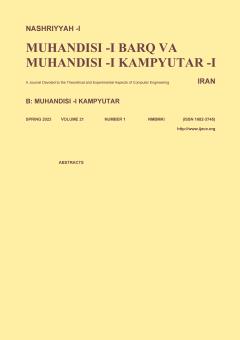تشخیص و بازیابی تصاویر تحت حملات با نرخ دستکاری بالا
الموضوعات : electrical and computer engineeringفرانک توحیدی 1 , محمدرضا هوشمنداصل 2
1 - دانشگاه یزد
2 - دانشگاه محقق اردبیلی
الکلمات المفتاحية: نهاننگاری, تشخیص دستکاری, بازیابی داده, بازیابی تصویر,
ملخص المقالة :
در سالهای اخیر با رشد روزافزون فناوریهای دیجیتال، نسخهبرداری عکسهای دیجیتال و حتی تغییر آنها بدون افت کیفیت و با هزینه اندک امکانپذیر شده است. نهاننگاری، یکی از روشهای موفق تشخیص دستکاری و حتی بازیابی دادههای اصلی میباشد؛ ولی هنوز مشکلات زیادی برای ارائه یک نهاننگار مناسب که قادر به تشخیص و بازیابی هر نوع دستکاری باشد، وجود دارد. این مشکلات خصوصاً در مواردی که حملات خاص دستکاری با نرخ بالا صورت میگیرد حادتر خواهد بود. در این مقاله یک روش نهاننگار معرفی شده که نهتنها قادر به تشخیص هر گونه دستکاری است، بلکه در نرخهای بالای دستکاری نیز میتواند دادههای اصلی را با کیفیت بالا بازیابی کند. در این مقاله برای تشخیص دستکاری از تجزیه به مؤلفههای تکین (SVD) استفاده میشود. همچنین نهاننگار برای بازیابی دادههای از دست رفته از روش مبتنی بر OIBTC استفاده میکند. این مقاله روشی کارا برای افزایش حساسیت تشخیص و در عین حال افزایش مقاومت نهاننگار برای بازیابی ارائه میدهد. نتایج بهدستآمده برتری روش پیشنهادشده را نسبت به روشهای اخیر ثابت میکنند.


